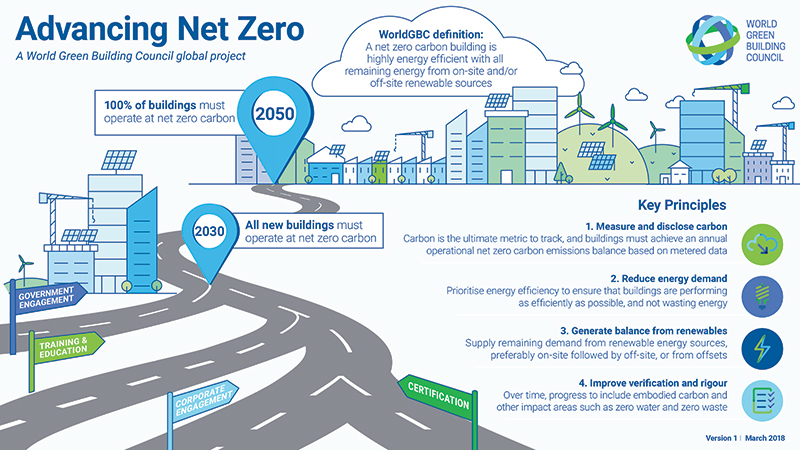Why build 'Net Zero Carbon' Buildings
Our children and youth are marching in the streets today, protesting at the way so little is being done to prevent climate change. And they are right. What is the quality of the legacy we leave behind for them? For us as architects, that means fundamentally re-looking at the way we construct buildings to work with the environment positively rather than against it. Love is a choice – to act with love towards our kids and their kids, we need to choose actions that positively impact their future rather than destroy it, and that includes where we put some of our biggest financial and time investments - the homes and buildings they grow up in.
The global context.
By 2030 – it is an aim of the World Green Building Council that all new buildings operate at net zero carbon to reduce the build environments contribution to climate change. All existing buildings should be net zero by 2050. This is dedicated to holding the construction industry to the goals of the Paris Climate accord. The aim is to reduce the construction industries carbon dioxide emissions by 84 gigatons over the next 30 years. Low carbon buildings are designed to reduce these emissions. Carbon and green house gas emissions are released during building construction, (through materials, transport, demolition waste transport and treatment) and through building operation (electricity consumption, use of fossil fuels on site, on site waste-water treatment, and solids, industrial processes), and building deconstruction.
The NZ context
Within New Zealand it’s estimated that 20% of our green house emissions come from the built environment – half from the construction of buildings + infrastructure and half from the operation of buildings. As Architects we are on the front line of creating change to protect our environment. We take that seriously for the future generations health and wellbeing, as well as our own today.
The NZ Green building council has launched a NET ZERO CARBON Road map to get all our buildings zero carbon by 2050, and all new buildings zero carbon by 2030.
This cannot happen alone or be solely reliant on the good will of enlightened building owners, it needs to be a key part of the building code, supported by government and industry so that it is a compulsory part of our direction as a nation.
How to build Net Zero Carbon buildings in New Zealand.
Some of our expectations of how we build are going to have to be rethought and adjusted to come into line with these levels. It is high time we develop and design and implement ways of living in our built environment that has a greater harmony with our natural environment. The technology is here today – its just a matter of showing our kids we truly care about their future and put these ideas into action.
See Part 2 in our next blog post of ways you can build to achieve these goals.
